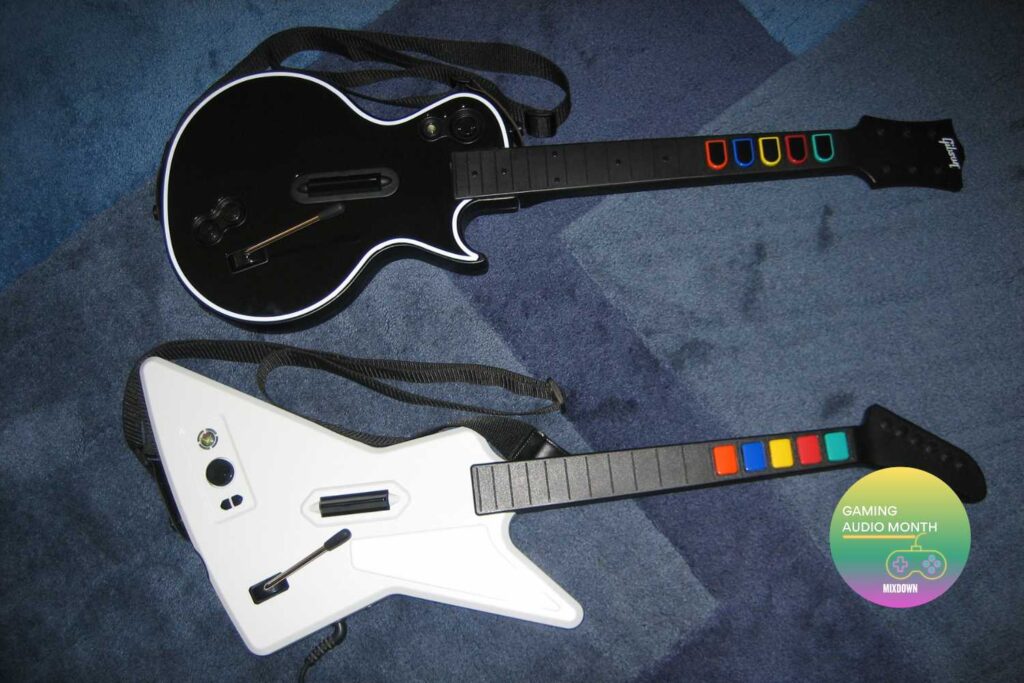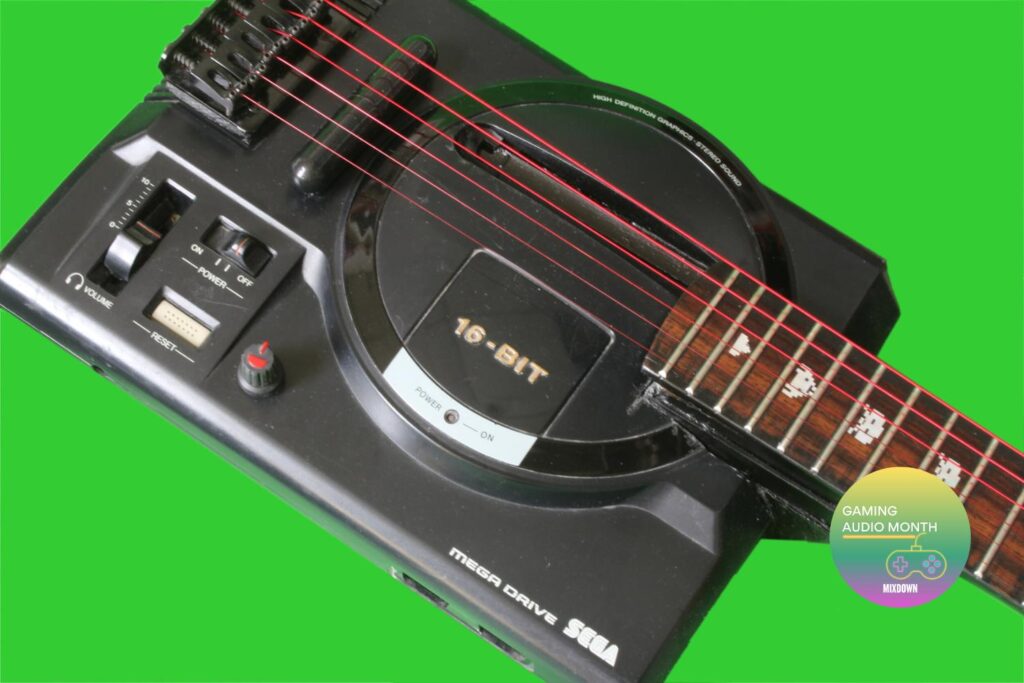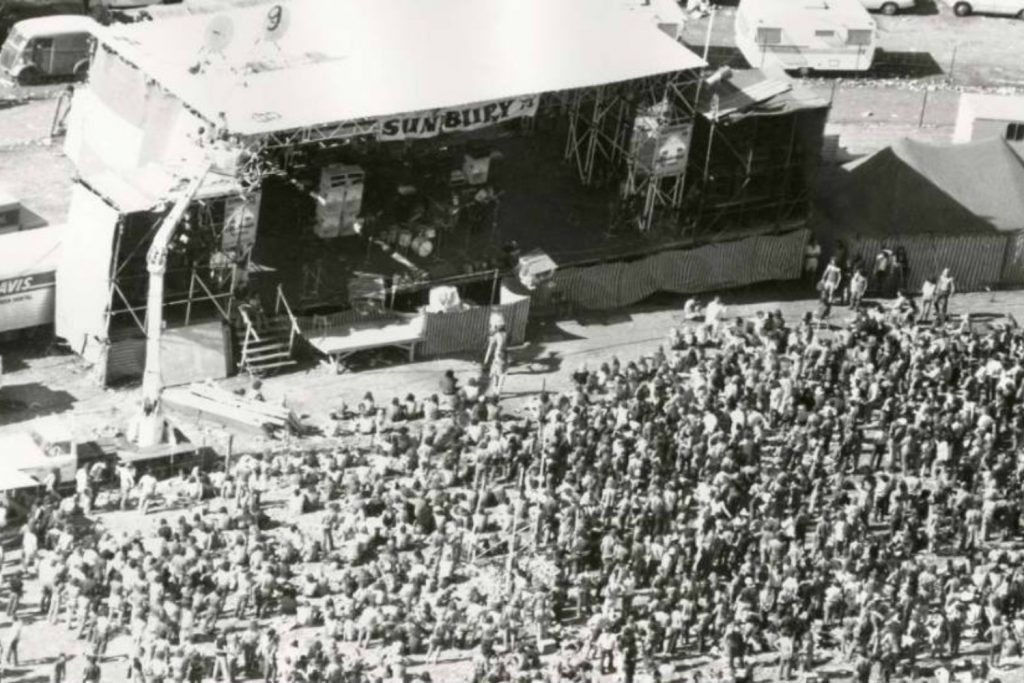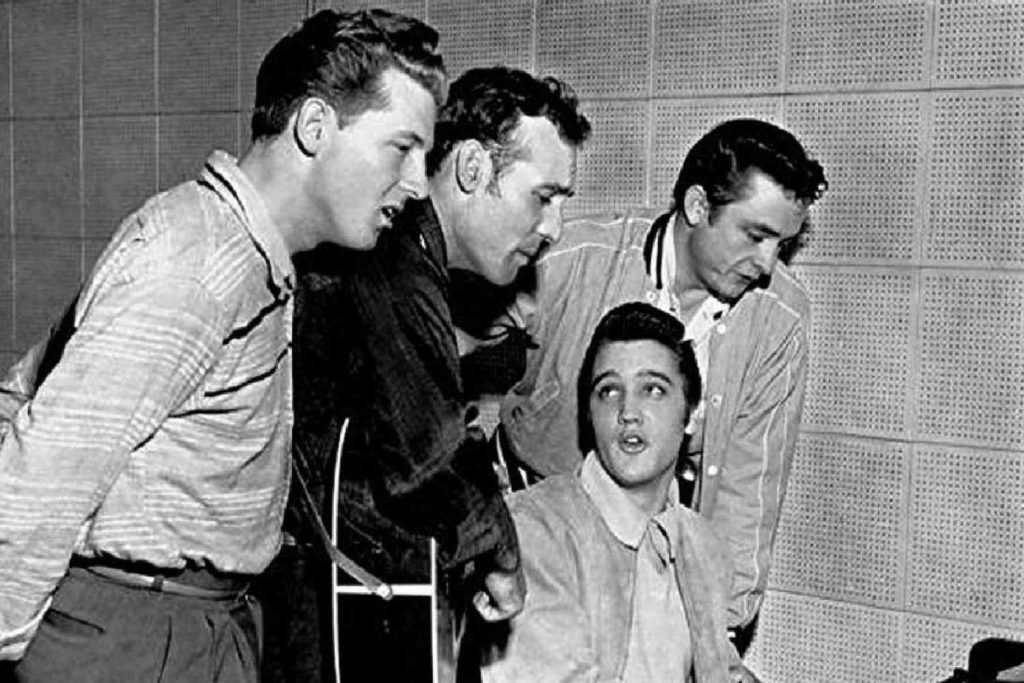Any seasoned studio engineer knows that a good acoustic guitar can be the glue that sticks a great track together
Whether adding a little percussive jangle or sitting front and centre in the mix, there’s a certain charm about acoustics that’s tough to replicate with any other instrument – stringed or otherwise – making them essential for any producer’s sonic toolkit.
While there’s an abundance of acoustic guitars out there that’ll serve this purpose, there’s one particular brand that presents a little more prominently from the pack. With a legacy that spans nearly two centuries, Martin Guitars are a titanic force within the stringed instrument sector, and there are few studio applications where their workhorses won’t hold steady.
Read all the latest features, columns and more here.
However, with a 180-year history comes a vast catalogue of creations, and as such, it can be tough to know where to start with this cherished maker. Here, we break down some of Martin’s most iconic acoustic models, assessing how factors like tonewood, body shape, and even string choice can alter their recorded sound.
Shaping the sound
When we think acoustic, the shape that probably first springs to mind is that of the dreadnought: a classic, wide-shouldered beast with a bold tone and plenty of volume. Martin were actually the originators of the dreadnought shape back in 1916, and since then, it’s been key to their brand identity.
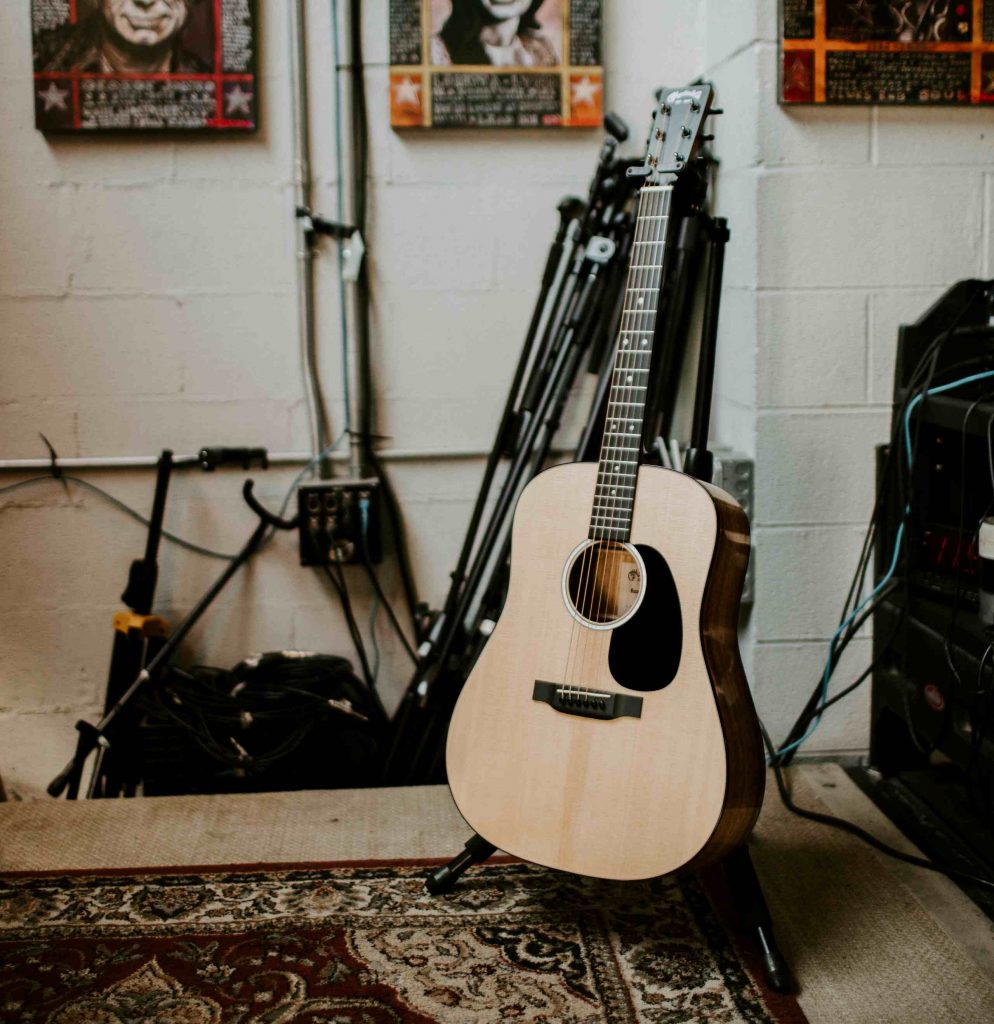
Chief among Martin’s dreadnought fleet is none other than the D-28, which holds the title as the most recorded acoustic guitar in history. From Bob Dylan and the Beatles through to Johnny Cash and Joni Mitchell, this high-end model has carved quite a legacy for itself as a distinctive sonic workhorse.
Not to be overshadowed, the D-18 is also worthy of a mention in the dreadnought category. It’s best recognised in the hands of Kurt Cobain and Neil Young, while more contemporary aficionados include Jason Isbell, Fleet Foxes’ Robin Pecknold, and Australia’s own Dan Sultan and Matt Corby. These models are incredibly studio friendly, and with a bit of clever miking, you’ll barely need to reach for the EQ when mixing.
While lacking the broad dimensions of the dreadnought, the Orchestral Model, or 000 body shapes, certainly don’t lack in dynamics and deliver a gorgeous, articulate tone, making it a favourite among fingerpickers. Notable players include John Mayer and Eric Clapton, and that kind of pedigree really says all you need to know about this shape.
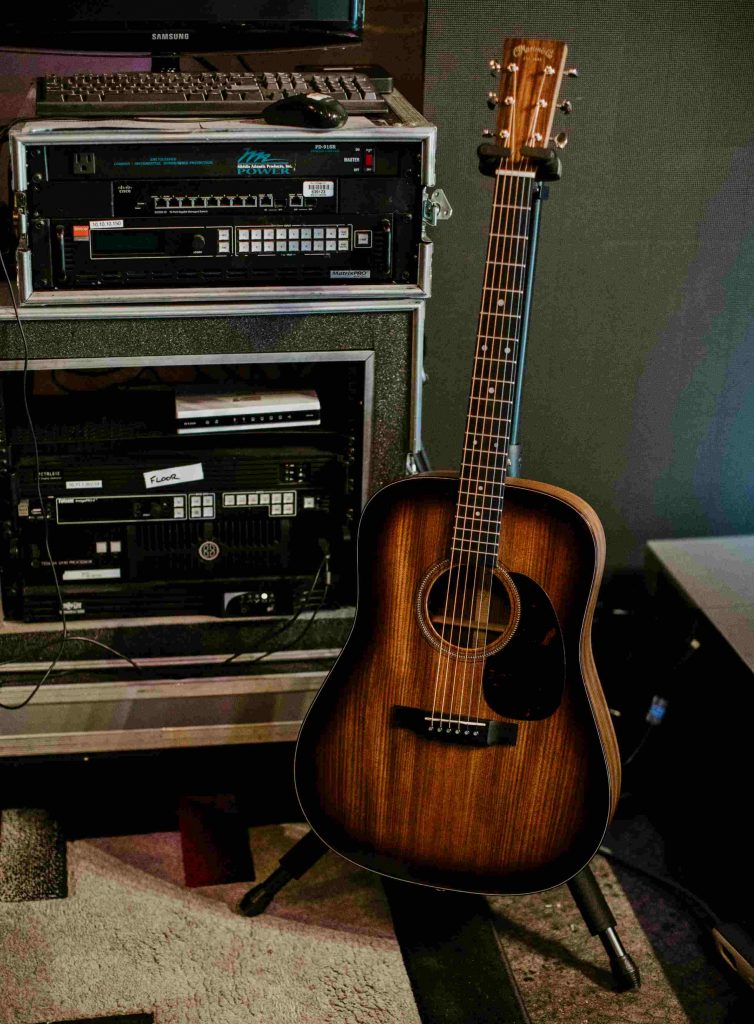
‘Warmth’ is an adjective that’s typically derided among most musical types, but there’s no denying that Martin’s depression-era style models are certainly fitting of the description. Guitars like the 000-15M are beloved for their woody, mellow tone, which can be largely attributed to their all-mahogany construction. With such a gorgeous tone and effortless playability, it’s little wonder why alternative heroes like City and Colour, John Frusciante and Thom Yorke have relied on them so heavily for their acoustic output.
For those wanting a bit more of an eclectic aesthetic and daring tone, the more contemporary SC-13E is also worth a shout, with its oblique cutaway and distinctive neck join allowing for fretboard reach that few other acoustic models can provide. Tonally balanced and oh-so-comfortable, this new series is suitable for strummers and pluckers alike.
Testing tonewoods
Some may claim that tone is all in the fingertips, but any seasoned operator knows that tonewood plays a huge role in a guitar’s recorded sound, particularly that of the soundboard.
Evidently, the most popular acoustic top timber is spruce, which dishes up a broad dynamic range and plenty of resonance whether strummed or plucked. Mahogany and koa are also quite common, and are arguably better suited to smaller body shapes due to their rich midrange characteristics.
Mahogany is also frequently found used as a back and side timber, and proves to be a suitable foil for the dynamic range of most spruce variants. Beyond the traditional rosewood variations, there are many species to explore including; maple, cocobolo, and, koa ebony which have their own unique character when implemented for the back and sides, so make sure you research the sonic characteristics of each timber before you take the plunge.
Do strings matter?
It might seem hard to believe, but there’s no denying strings play a mighty role in your overall acoustic tone. Not only do they affect brightness and output, but inferior strings can also have an impact on neck comfort, which can prove a hindrance during long studio hours.
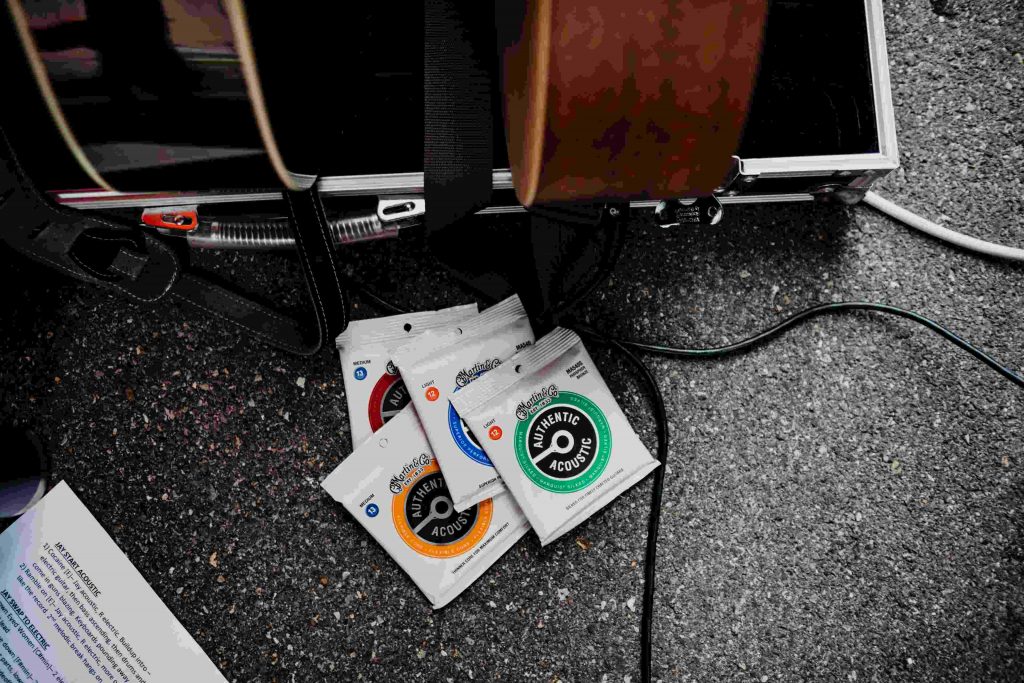
In most scenarios, Phosphor Bronze strings will produce a well-rounded tone that retains evenness once worn in, while Treated strings are a better option for longer sessions where upholding tonal integrity is crucial. Other alloys, materials and gauges are worth exploring and can have a greater influence on the tone of the guitar, especially Monel which is utilised in the Retro range, whereas developments in Flexible Core or Titanium Core are also practical for comfort and offer superior tuning stability, meaning you can shred away without any fatigue.
Finally, it should be noted that plectrums also matter. If you haven’t toyed around with finding the perfect pick for you, it’s well worth the investment – we’d urge you to try Martin’s asymmetrical Contour pick if you’re keen to see how different bevels impact your tone.
Likewise, Martin’s Luxe Liquid Metal bridge pins are a worthy upgrade for any acoustic aficionado, delivering a subtle boost to brightness and volume that will really go the distance in a recorded setting.
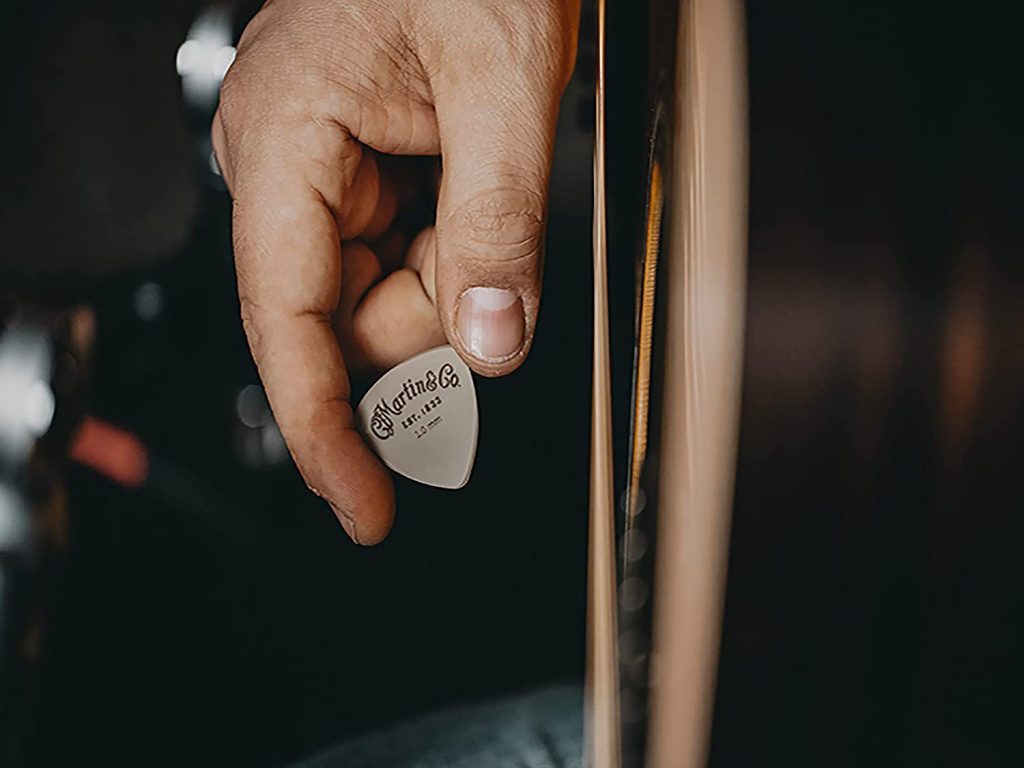
We haven’t even managed to cover all the best ways to mic up or mix a Martin, but hey – we’ll leave that up to you. Experimenting in the studio is one of the greatest joys of being a musician, and we wouldn’t want to rob that experience from anyone.
Head to Martin for more information. For local enquiries on Martin products, reach out to Electric Factory.


